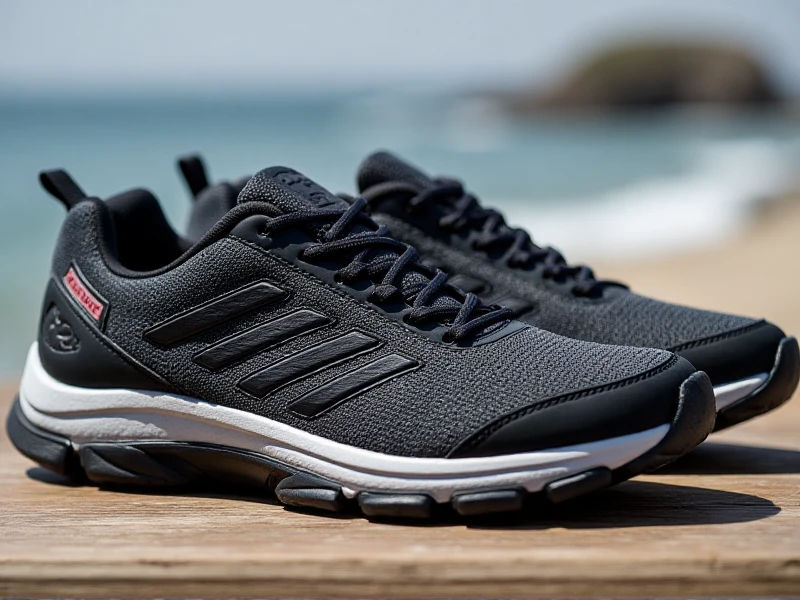Discover the Ultimate Guide to Choosing the Best Men's Running Shoes
2025-06-10

Certainly! Here’s the SEO-friendly article targeting "men’s running shoes," designed for a website or blog:
Finding the perfect pair of men's running shoes is essential for comfort, performance, and injury prevention. Whether you're training for a marathon, hitting the trails, or enjoying a daily jog, the right footwear makes all the difference. This guide breaks down everything you need to know to find your ideal match.
Why the Right Fit Matters More Than You Think
Running in poorly fitting shoes isn’t just uncomfortable—it can lead to blisters, shin splints, knee pain, and long-term injuries. Unlike fashion sneakers, men's running shoes need to accommodate the dynamic motion of your foot during impact. Prioritize fit over style: ensure a thumb's width of space at the toe, a snug (not tight) heel hold, and enough midfoot support to prevent slippage. Remember, sizing can vary wildly between brands; always measure your feet later in the day when they’re naturally swollen.
Key Features to Prioritize in Men's Running Shoes
1. Cushioning Level: This absorbs impact. Consider your running style and joint sensitivity. High-cushion shoes like the ASICS Gel-Nimbus offer maximum protection for long road runs or runners needing joint relief. Lightweight models like the Nike Air Zoom Pegasus provide responsive cushioning for speedwork. Trail runners need rugged cushioning to handle uneven terrain, found in options like the Salomon Speedcross.
2. Stability vs. Neutral Support: Overpronators (feet rolling inward) benefit from stability shoes featuring medial posts or guide rails, such as the Brooks Adrenaline GTS. Neutral runners (feet rolling minimally) have more flexibility, ideal for shoes like the New Balance Fresh Foam 1080. Understanding your gait is crucial – many specialty running stores offer gait analysis.
3. Weight & Responsiveness: Lighter shoes generally feel faster but offer less cushioning. Heavier trainers provide durability and support for longer distances. Consider your typical run distance and preferred pace.
4. Breathability & Upper Construction: Mesh uppers dominate modern running shoes, offering crucial ventilation. Look for seamless designs or strategically placed overlays to minimize rubbing and hotspots. A secure lacing system is also vital for lockdown.
Don't Overlook Durability and Surface Type
Outsole Rubber: The thickness and placement of carbon rubber (especially in high-wear areas like the heel and forefoot) determine longevity. Durable outsoles withstand hundreds of miles.
Intended Surface: Road shoes focus on smooth surfaces and cushioning. Trail running shoes feature aggressive, deeply-lugged outsoles for superior grip on mud, rocks, and loose terrain, plus often include rock plates for protection (e.g., Hoka Speedgoat). Hybrid shoes exist but specialize for best performance.
Replacing Your Men's Running Shoes: Know the Signs
Even the best shoes wear out. Typical lifespan is 300-500 miles, depending on factors like your weight, running style, and surfaces. Key indicators it’s time for a new pair include:
Visible midsole creasing or compression
Severe outsole wear, especially tread loss in key areas
Decreased cushioning or responsiveness (legs feel more fatigued)
Unexplained aches and pains developing during runs
Regularly rotating between two pairs can extend the life of each.
Finding Your Perfect Pair: Action Steps
1. Assess Your Needs: What distances do you run? On what surfaces? Do you need stability? Any recurring injuries?
2. Research Top Brands: Reputable brands investing heavily in running tech include Brooks, ASICS, Saucony, New Balance, Nike, Adidas, Hoka One One, and Altra. Each excels in different areas.
3. Read Updated Reviews: Tech evolves quickly! Look for recent reviews and comparisons focusing on the latest models relevant to your running profile.
4. Try Before You Buy: Visit a dedicated running store. Bring your current shoes and your running socks. Get fitted by an expert who watches you run. Try multiple pairs and sizes.
5. Prioritize Comfort Immediately: There should be no obvious "break-in" required. If they aren't comfortable walking around the store or jogging briefly, they likely won’t work on mile 5.
Invest in Your Stride
Your men's running shoes are your most critical running gear. Choosing wisely isn’t just about improving performance; it’s about enjoying the run and staying injury-free for the long haul. Dedicate time to research and fitting. That perfect pair supports every stride towards your running goals, transforming every mile into a more rewarding experience.
Ready to explore top models? Check out our latest roundups and expert reviews to find the best men's running shoes hitting the market now! Your feet will thank you.
Category: